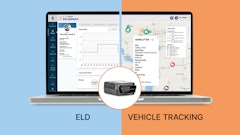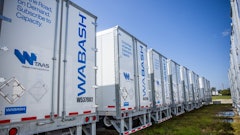
For more than 2,000 years, paper has been the time-tested form of communication. The introduction of the Internet, however, provided a much faster and more convenient way to transmit information, transforming the way businesses operate. Across the globe, industries that bought into the power of digital technology are reaching major milestones (productivity, profitability, etc.) faster than ever before. The supply chain, however, has allowed paper to linger, further hindering the way deliveries are made and information is distributed among key partners of the industry.
Each day, shippers, carriers and retailers face the inconvenience paper creates through limited visibility, inaccurate dwell-time reports and driver health and safety. In addition, administrators and warehouse staff feel the burden of paperwork, often left to play the waiting game and filing paperwork never to be seen again. Today, as industries embrace the digital transformation, the supply chain must follow suit.
Visibility
The creation of third-party delivery services has conditioned millions of consumers to track their orders in real time, oftentimes down to the very street it’s traveling. Unlike the digital landscape third-party delivery services thrive from, the supply chain continues to rely on physical bills of lading (BOLs). The use of physical BOLs forces shippers, carriers and retailers to rely on a truck driver’s ability to make a delivery and return approved BOLs successfully and in a timely manner. With thousands of miles and no communication, in between, the industry operates on confidence, rather than that of real-time updates consumer-facing services rely on.
As the supply chain continues to rely on physical BOL to share important information, communication delays will persist industry-wide. To alleviate the stress and anticipation of expecting a load or receiving an approved BOL, supply chain automation must be implemented throughout. Such digital transformation will allow shippers, carriers and receivers to use time more efficiently by making real-time decisions on route adjustments, responses to customer complaints and using data to plan ahead that paper simply doesn’t provide.
The industry’s reliance on paper not only costs companies time, but money. On average, shippers experience upwards of $3 billion per year in detention fees. While drivers and companies don’t collude to commit detention fraud, a driver’s inability to report detention time on the spot often results in best guesses and inaccurate accounts. Through a more digitized, advanced supply chain automation system, drivers are able to avoid a seemingly inevitable occurrence, giving companies an opportunity to reallocate budgets and save billions of dollars every year.
Efficiency
The time drivers spend getting in and out of their cabs to deliver physical BOLs is a true testament to “time is money.” Each passing second that delays a driver from heading to their next stop costs companies potential revenue. By implementing an industry-wide supply chain automation system, drivers have the ability to perform their duties, such as delivering eBOLs, from the comfort of their cab. These digital capabilities allow drivers to be more efficient in their deliveries by eliminating the time it takes to get out of a cab to deliver a physical BOL to the warehouse manager upon arrival, as well as the trip back. With this expedited process, drivers are able to get back on the open road sooner, thus making more money for themselves and the companies they represent.
Health and safety
Throughout the pandemic, the industry has aimed to keep its employees safe, implementing safety protocols and limiting face-to-face interactions. However, the continued use of physical BOLs keeps drivers in harm’s way, as they encounter multiple people per stop. Now, not only is the safety of the driver a priority, but so too is the safety of those they interact with along the way. Though paper has always been a supply chain staple, it now adds an extra layer of risk to the industry. By enforcing supply chain automation and implementing the use of electronic BOLs, the need for direct contact is removed from the equation. Furthermore, the implementation of an advanced, digital landscape would keep the industry’s flow intact, all while executing shipments in a timely manner and keeping employees safe.
Sustainability
With thousands of deliveries happening each and every day, the sheer volume of paper is astonishing. So, where do physical bills of lading end up once copies are delivered and processing is complete? Oftentimes, they end up in boxes, in warehouses full of more boxes, creating clutter and taking up unnecessary space, leaving industry professionals unable to find historical information when it’s needed most. The power of supply chain automation allows shippers, carriers and retailers to store BOLs digitally, saving space, lessening impact on the environment and increasing information availability.
While paper will never fully leave the industry, individual companies have the ability to ease the current, outdated processes the industry faces. By adopting aspects of a supply chain automation platform, including electronic BOLs, driver workflow and mobile capture, companies can demonstrate the ability to simplify and standardize, thus removing the need for, and limitations of, paper.





















